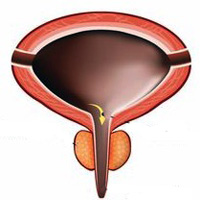Looking for cystoscopy on YouTube: Are videos a reliable information tool for internet users?

Accepted: December 20, 2021
All claims expressed in this article are solely those of the authors and do not necessarily represent those of their affiliated organizations, or those of the publisher, the editors and the reviewers. Any product that may be evaluated in this article or claim that may be made by its manufacturer is not guaranteed or endorsed by the publisher.
Objective: The Internet is an important and easily accessible source of information. The aim of the current study was to investigate the quality of YouTube videos on cystoscopy and to establish if they can be used as a reliable information tool for internet users.
Materials and methods: The search term “cystoscopy” was used on YouTube platform and the first 120 YouTube videos were analyzed. To assess the video quality Patient Education Materials Assessment Tool (PEMAT) for Audiovisual (A/V) Materials (Understandability and Actionability sections), Misinformation score and Global Quality Score (GQS) were used.
Results: Of all 120 videos, 72 were included in the analyses. Of all videos, 59.7% (n = 43), and 40.3% (n = 29) were targeted to General Public and Healthcare Workers. Moreover, “technical aspects” was the main topic addressed (n = 29, 40.3%). The median PEMAT A/V Understandability and Actionability scores were 50.0% (IQR: 39.1-70.0) and 66.7% (IQR: 33.3- 100.0), respectively. The median Misinformation score ranged from 1.0 to 3.0. According to GQS, 22 (30.6%), 26 (36.1%), 16 (22.2%), 8 (11.1%) videos were poor, generally poor, moderate, and good, respectively. No video was evaluated as excellent.
Conclusions: Today, YouTube videos on cystoscopy are more frequently uploaded by healthcare workers, who share information about specific aspects of this procedure. However, the quality of YouTube contents on cystoscopy is still poor. Therefore, currently users interested in cystoscopy cannot rely on YouTube to get good informative material on this topic. In consequence, future authors should focus on improving the quality of video contents on cystoscopy
Dobé T-R, Califano G, von Rundstedt F-C, et al. Postoperative chemotherapy bladder instillation after radical nephroureterectomy: Results of a European survey from the Young Academic Urologist Urothelial Cancer Group. Eur Urol Open Sci. 2020; 22:45-50. DOI: https://doi.org/10.1016/j.euros.2020.10.003
Creta M, Sagnelli C, Celentano G, et al. SARS-CoV-2 infection affects the lower urinary tract and male genital system: A systematic review. J Med Virol. 2021; 93:3133-42. DOI: https://doi.org/10.1002/jmv.26883
Califano G, Ouzaid I, Verze P, et al. New immunotherapy treatments in non-muscle invasive bladder cancer. Arch Esp Urol. 2020; 73:945-53.
Capece M, Spirito L, La Rocca R, et al. Hexaminolevulinate blue light cystoscopy (Hal) assisted transurethral resection of the bladder tumour vs white light transurethral resection of the bladder tumour in non-muscle invasive bladder cancer (NMIBC): a retrospective analysis. Arch Ital Urol Androl 2020; 92:17-20. DOI: https://doi.org/10.4081/aiua.2020.1.17
Verze P, Califano G, Sokolakis I, et al. The impact of surgery for lower urinary tract symptoms/benign prostatic enlargement on both erectile and ejaculatory function: a systematic review. Int J Impot Res. 2019; 31:319-27. DOI: https://doi.org/10.1038/s41443-019-0140-0
Peyrottes A, Ouzaid I, Califano G, et al. Neoadjuvant immunotherapy for muscle-invasive bladder cancer. Med Kaunas Lith. 2021; 57:769. DOI: https://doi.org/10.3390/medicina57080769
Creta M, Celentano G, Napolitano L, et al. Inhibition of androgen signalling improves the outcomes of therapies for bladder cancer: results from a systematic review of preclinical and clinical evidence and meta-analysis of clinical studies. Diagn Basel Switz. 2021;11:351. DOI: https://doi.org/10.3390/diagnostics11020351
Califano G, Collà Ruvolo C, Creta M, et al. Focus on silodosin: pros and cons of uroselectivity. Res Rep Urol. 2020; 12:669-72. DOI: https://doi.org/10.2147/RRU.S287129
Imperatore V, Creta M, Di Meo S, et al. Intravesical administration of combined hyaluronic acid and chondroitin sulfate can improve symptoms in patients with refractory bacillus Calmette-Guerininduced chemical cystitis: Preliminary experience with one-year follow- up. Arch Ital Urol Androl. 2018; 90:11-4. DOI: https://doi.org/10.4081/aiua.2018.1.11
Ullrich PFJ, Vaccaro AR. Patient education on the Internet: opportunities and pitfalls. Spine. 2002; 27:E185. DOI: https://doi.org/10.1097/00007632-200204010-00019
Morra S, Collà Ruvolo C, Napolitano L, et al. YouTubeTM as a source of information on bladder pain syndrome: A contemporary analysis. Neurourol Urodyn. 2022; 41:237-245. DOI: https://doi.org/10.1002/nau.24802
Gerundo G, Ruvolo CC, Puzone B, et al. Personal protective equipment in Covid-19: evidence-based quality and analysis of YouTubeTM videos after one year of pandemic. Am J Infect Control. 2021; S0196-6553(21)00758-6.
Passos PS, Carvalho N, Anacleto ST, et al. Digital informed consent on radical prostatectomy surgery - A turning point on patient communication means. Arch Ital Urol Androl. 2021; 93:366-9. DOI: https://doi.org/10.4081/aiua.2021.3.366
Capece M, Di Giovanni A, Cirigliano L, et al. YouTube as a source of information on penile prosthesis. Andrologia. 2021; e14246. DOI: https://doi.org/10.1111/and.14246
Kim HJ, Kim JW, Park HS, et al. The use of a heating pad to reduce anxiety, pain, and distress during cystoscopy in female patients. Int Urogynecology J. 2019; 30:1705-10. DOI: https://doi.org/10.1007/s00192-018-3786-0
Megaly M, Khalil C, Tadros B, Tawadros M. Evaluation of educational value of YouTube videos for patients with coeliac disease. Int J Celiac Dis. 2016; 4:102-4.
Shoemaker SJ, Wolf MS, Brach C. Development of the Patient Education Materials Assessment Tool (PEMAT): A new measure of understandability and actionability for print and audiovisual patient information. Patient Educ Couns. 2014; 96:395-403. DOI: https://doi.org/10.1016/j.pec.2014.05.027
Salama A, Panoch J, Bandali E, et al. Consulting «Dr. YouTube»: an objective evaluation of hypospadias videos on a popular videosharing website. J Pediatr Urol. 2020; 16:70.e1-70.e9. DOI: https://doi.org/10.1016/j.jpurol.2019.11.011
Rubel KE, Alwani MM, Nwosu OI, et al. Understandability and actionability of audiovisual patient education materials on sinusitis. Int Forum Allergy Rhinol. 2020; 10:564-71. DOI: https://doi.org/10.1002/alr.22518
Loeb S, Sengupta S, Butaney M, et al. Dissemination of misinformative and biased Information about prostate cancer on YouTube. Eur Urol 2019; 75:564-7. DOI: https://doi.org/10.1016/j.eururo.2018.10.056
PAGEPress has chosen to apply the Creative Commons Attribution NonCommercial 4.0 International License (CC BY-NC 4.0) to all manuscripts to be published.


 https://doi.org/10.4081/aiua.2022.1.57
https://doi.org/10.4081/aiua.2022.1.57



